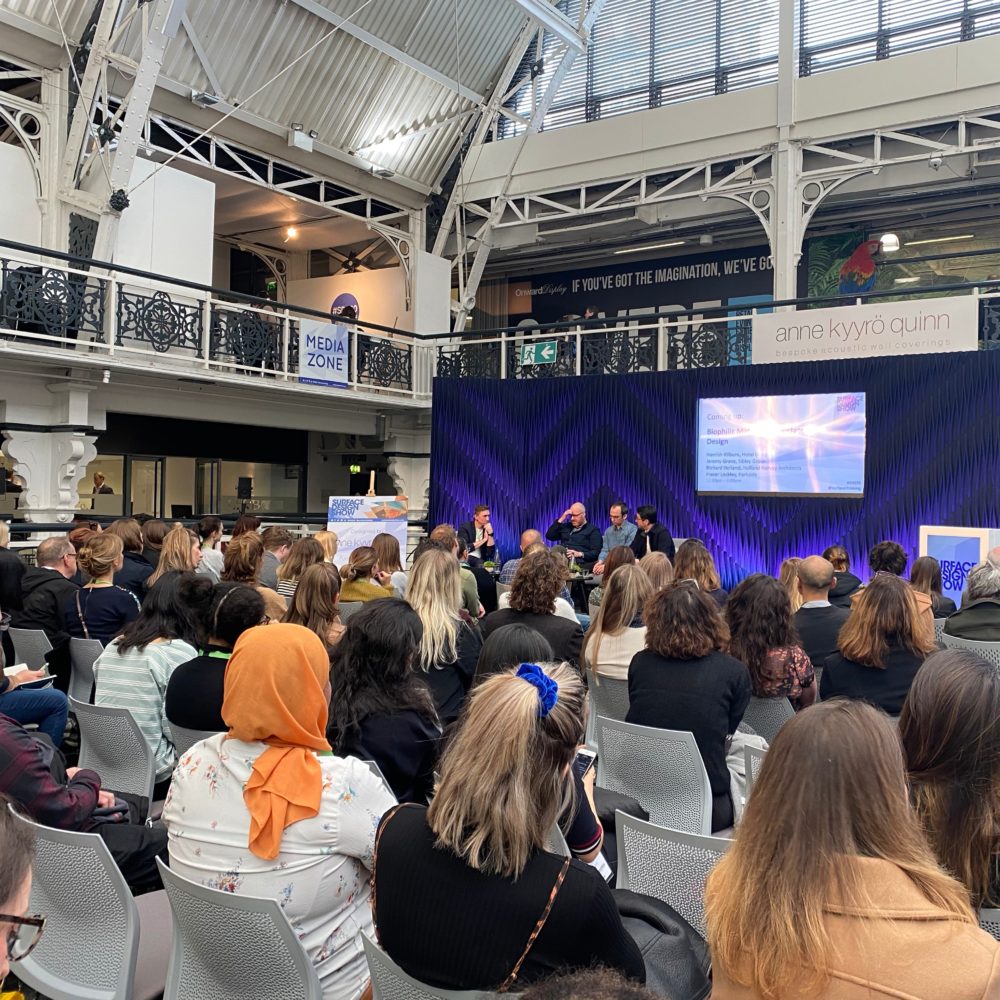
Getting your Pots off at CDW25 with Rich Miller and Alusid
A big thank you for joining us at Clerkenwell Design Week 2025 and taking part in our creative sessions with Channel 4’s Rich Miller of the Great Pottery Throwdown and…
This screen helps to save electricity when you are not using your web browser.
To resume browsing, just click anywhere on the screen.




Last week, Fraser Lockley joined Jeremy Grove (Sibley Grove), Richard Holland (Holland Harvey Architects) and Hamish Kilburn (Hotel Designs) at the Surface Design Show to discuss biophilic materials in surface design.
The discussion covered how far materials have come in recent years, whether biophilic design can go too far, the all-important budget and how do we avoid it being just a trend?
Biophilic materials have been around for a number of years now but it’s only recently that consumers, brands and designers have started to increasingly use them. Many tiles contain a percentage of recycled content and have done for some time, but rewind 10-15 years ago and many suppliers were reluctant to share any information about recycled content as it was feared that the products would be perceived as inferior. There’s very much a positive sea change in the perception of biophilic materials.
The panel agreed that biophilic design cannot go too far; we are only just taking the first step. Our current model of consumption is linear, always ending up with waste, so it was proposed that we need to completely rethink our approach to design.
We all have budgets to adhere to so for the panel it was about focused spend; what’s the focus of the space and bring in biophilic elements there. Many biophilic materials aren’t new so aren’t necessarily budget breaking, and many materials already have biophilic qualities that we may not be aware of so sometimes just finding out a bit more and reinterpreting what we’re already using is a way forward.
It was suggested that ‘trend’ is a dangerous word and our innate desire to connect with nature is what makes us human and has been so for millennia. By increasing knowledge through the supply chain and demonstrating the commercial viability of biophilic design, we can ensure that buildings make a positive contribution to those interacting with them.
The panel were excited by what the biophilic materials of the future may be as we’re only at the tip of the iceberg with various research projects ongoing.
Thank you to Hamish for hosting the discussion and Jeremy and Richard for contributing to an interesting and though-provoking discussion.

A big thank you for joining us at Clerkenwell Design Week 2025 and taking part in our creative sessions with Channel 4’s Rich Miller of the Great Pottery Throwdown and…

We were proud to partner with Material Source to present the hugely important seminar, Demystifying EDI: How do we design for all?(EDI = Equality, Diversity and Inclusion) Anne Sneddon had…